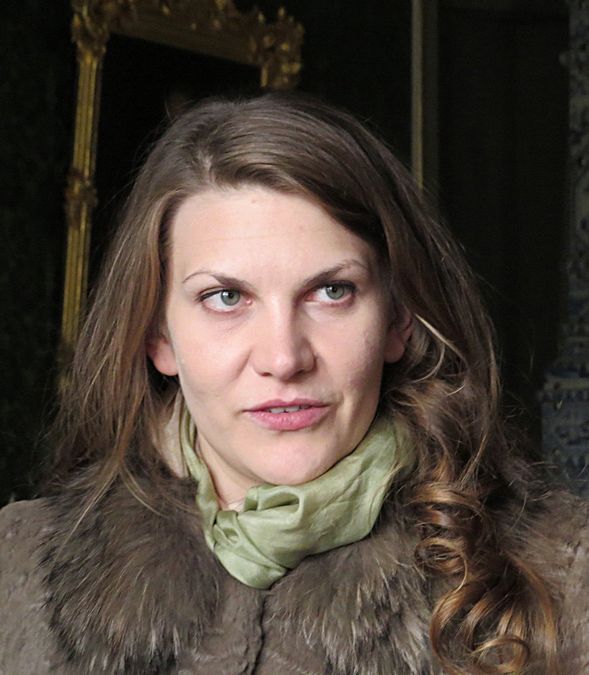The Baltic States, St. Petersburg, and Moscow
September 26 - October 14, 2013
Part Two - Latvia
Latvia is bordered by Estonia, Lithuania, Russia, Belarus, & the Baltic Sea.
Its ethnicities include
about 58% Latvian, 30% Russian, 4% Belarusian,
3% Ukrainian,
3% Polish. Most of the
country is flat plain, but only
about 28%
is arable due to the high water table. Almost 2/3 of the
population live in urban areas. The population is slightly over 2.2 million.
There are significant percentages of Lutherans, Roman Catholics, and
Russian Orthodox, but only about 7% percent of the population attends
religious services regularly. Like Lithuania and Estonia, it is a small
country with 24,938 square miles. It was probably first settled in
the Stone Age by a Balt people migrating from Belarus. Like its Baltic
neighbors, other nations were frequently trying to capture it. At the end of
the Livonian War in 1582, much of present day Latvia was under the rule
of Poland, but Russia invaded and eventually took over by 1721, and
the country was ruled by Russian Czars for 200 years. The end of WWI and
the Russian Revolution led to an independent Latvia, and Latvia had one
of Europe's highest standards of living until WWII. The secret
Molotov-Ribbentrop
Pact between Germany and Russia put Latvia into
Russia's sphere, but Germany soon
invaded and was in charge 1941-44,
until the Russians came to "rescue" Latvia in 1944, and it became
part of the Soviet Union until 1991. Like Estonia and Lithuania, many
Latvians were imprisoned or deported. With political changes in the
Soviet Union, Latvia
declared its independence in August 1991.
It is a member of the European Union, and it will convert to the
Euro as its currency on January 1, 2014.
An inspiring moment in the history of all 3 Baltic States occurred on
August 23, 1989 in a peaceful
political demonstration that involved the
formation
of the Baltic
Chain of Freedom. About 2 million people joined
their hands to form a human chain spanning over 370 miles across the
3 Baltic States. It
was designed to draw global attention by showing the
desire for independence for Estonia, Latvia, and Lithuania and
to advertise this issue as not only a political one but a moral one.
August 23 has
become an official European Day of Remembrance for
Victims of Stalinism and Nazism, also known as
the Black Ribbon Day.
Page One - Rundale Palace and Riga

Rundāle Palace is one of the two major baroque palaces
built for the Dukes of Courland in what is now Latvia.
The palace was built in two periods, from 1736 until 1740
and from 1764 until 1768. It is located in a rural area
near Riga, Latvia and was built as a summer residence.

The tour guide who showed us Rundale Palace.
The Palace was designed by the architect of
St. Petersburg's famous Hermitage, Bartolomeo Rastrelli.
It is now a museum and a major tourist attraction.

The Palace reveals 18th century aristocratic ostentatiousness.
It has 138 rooms but only about 1/3 are open to the public.
The East Wing was devoted to formal occasions.

The rooms were heated by a network of porcelain stoves.
The castle was mostly used in the warmer months.

During WWI, the castle's White Room, the main ballroom,
was turned into a hospital for wounded soldiers.

The West Wing was the private royal residence.
Here's a bedroom with porcelain stoves on either side.

Walls and ceilings are covered with ornate decorations
and wall hangings. Here's part of a ceiling decoration
in one of the rooms.


The Royal Gardens were inspired by the gardens at
Versailles. The Gardens were also used for public affairs.



Waterway and bridge at the front entrance to
Rundale Palace, taken as we were on our way out.

Riga, capital of Latvia. This is Freedom Monument.
It towers above the City between old town Riga
and central Riga. Affectionately called Milda, it was
erected in 1935 to honor soldiers who fought for Latvian
independence in WWI. A female Liberty tops it, holding 3 stars
representing the 3 original cultural regions of Latvia.
Surprisingly, during the Soviet years, it was not demolished.
The Soviets reinterpreted Liberty as Mother Russia caring for
its 3 newest members of Estonia, Latvia, and Lithuania. Milda
was strictly off limits. Anyone seen placing flowers at the base,
to commemorate victims of the Soviet regime,
was arrested and deported to Siberia.

Here is our local guide for Latvia.

In front of our Europa Royale Riga Hotel, a stray
cat was hanging out. Here the cat is peering at me
from under a bush at the hotel.
The hotel where we stayed was an old mansion. I had
an enormous suite, with a living room, bedroom, and
bathroom. Each room was large. Frequent OAT travelers
received the enormous, unneeded suites at this hotel.

Riga's old moat once protected the medieval interior
from invaders. Now it is incorporated into a thin
belt of stunning parkland splitting old and central Riga.

Canal view. It is a popular area for children to come with
their families to feed the ducks.

Another canal view within walking distance of our hotel.

School kids on an outing near the Freedom Monument.
Link to Page Two - Old Town Riga
Pat's Home Page